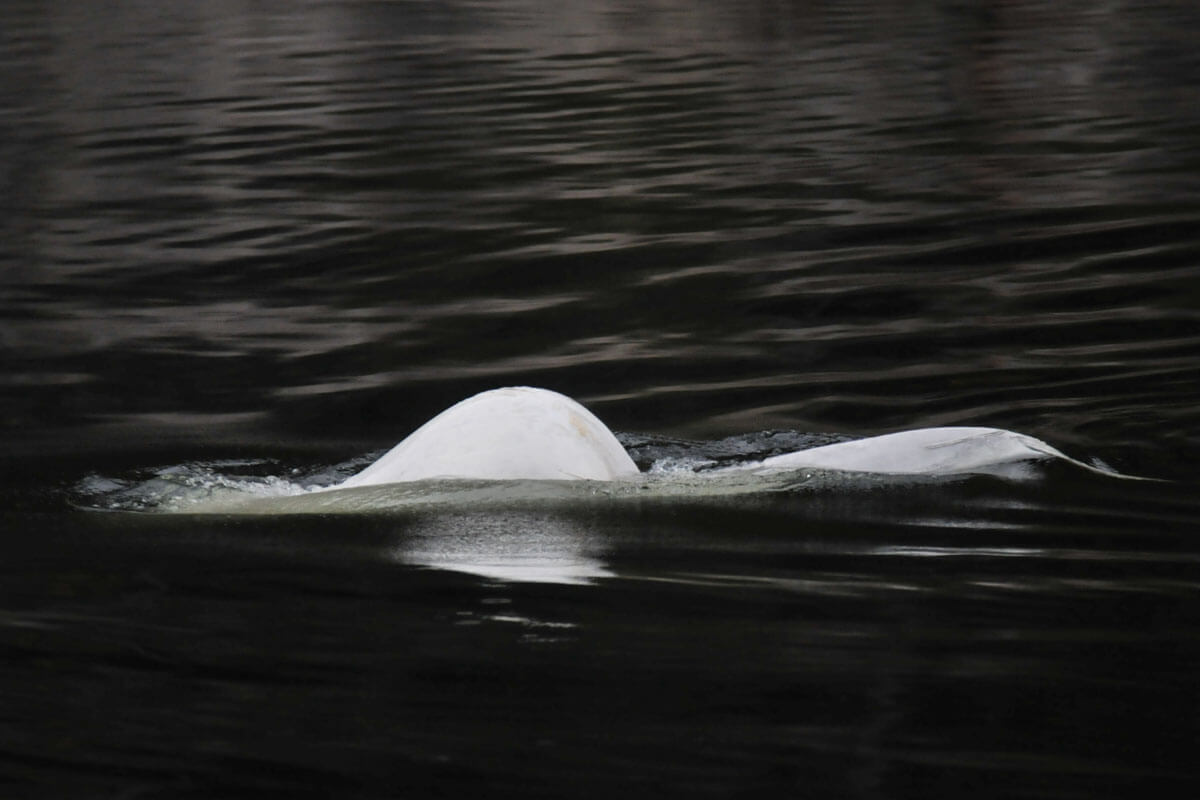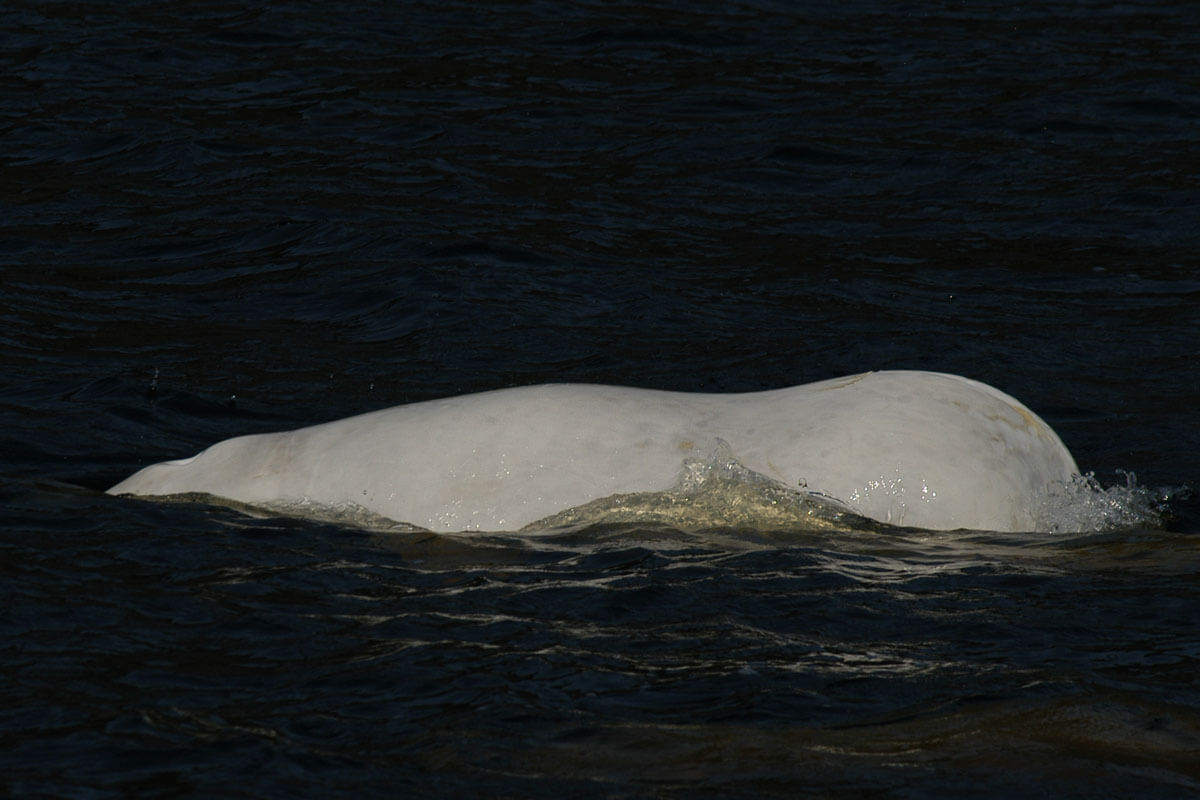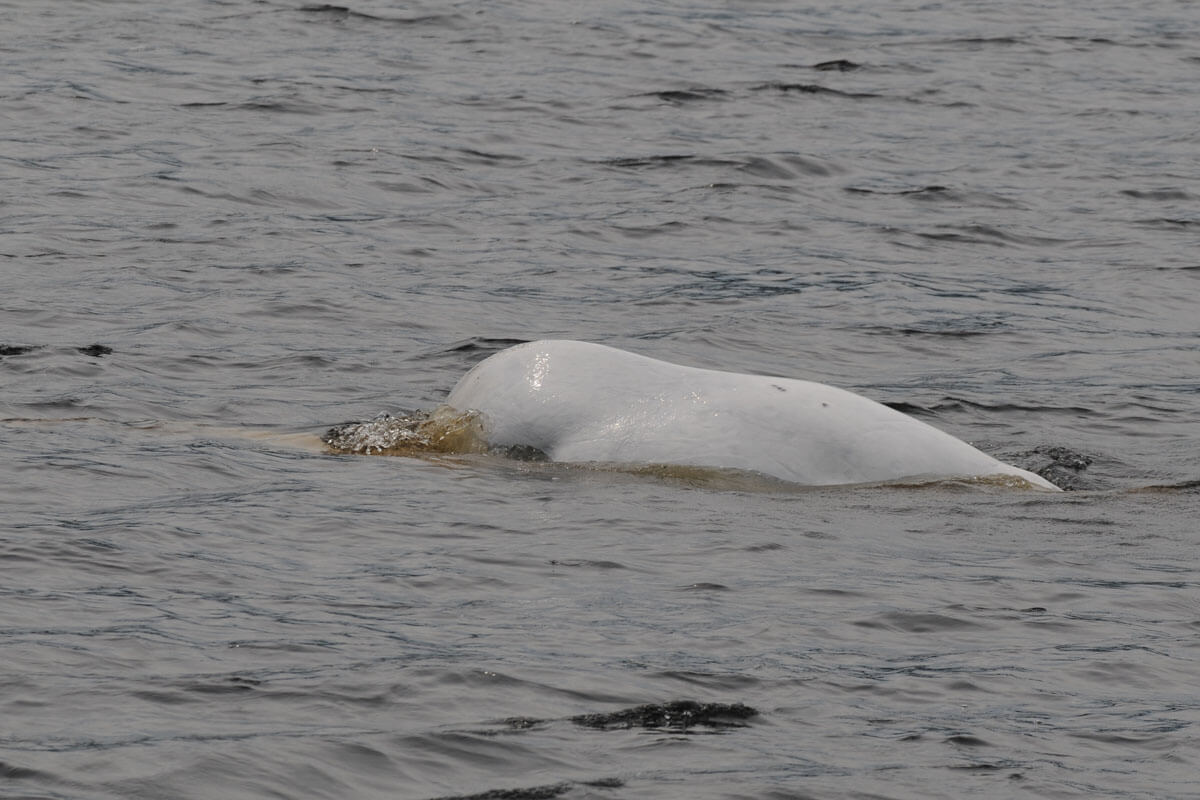Néo
Beluga


-
ID number
DL2450
-
Sex
Male
-
Year of birth
Before 2000
-
Known Since
2005
Distinctive traits
Deformed back that forms a very pronounced curve just after the dorsal crest – some observers think they saw two beluga whale backs when they observed Néo.
Black dots on the right flank.
Life history
Néo was astonishing from his first meeting with GREMM in 2005: despite his remarkable figure, he had never been photographed before! The young beluga whale has a hollow back, due to a major deformation of the spine, as well as black dots on its right flank, distinctive features that facilitate the photo-identification process. It is believed that Néo was born in an upstream beluga whale community, less documented by researchers.
As an adult, Néo continues to surprise. At this age, male beluga whales generally leave the family nest to form clans with other males. However, observers from Pointe-Noire and Sainte-Marguerite Bay, who have the opportunity to see Néo several times a season, observe that he often swims alone, or accompanied by juveniles and females. His physical handicap could be at the origin of this isolation and could even have provoked aggressive behaviour from other males. However, his solitude has advantages for humans: because he was isolated, researchers were able to distinguish and record Néo’s “contact call”, a unique acoustic signature specific to each individual.
Observations history in the Estuary
Years in which the animal was not observed Years in which the animal was observed
Latest news
Neo was astonishing from his first meeting with GREMM in 2005: despite his remarkable figure, he had never been photographed before! The young beluga whale has a hollow back, due to a major deformation of the spine, as well as black dots on its right flank, distinctive features that facilitate the photo-identification process. It is believed that Néo was born in an upstream beluga whale community, less documented by researchers.
As an adult, Néo continues to surprise. At this age, male beluga whales generally leave the family nest to form clans with other males. However, observers from Pointe-Noire and Sainte-Marguerite Bay, who have the opportunity to see Néo several times a season, observe that he often swims alone, or accompanied by juveniles and females. His physical handicap could be at the origin of this isolation and could even have provoked aggressive behaviour from other males. However, his solitude has advantages for humans: because he was isolated, researchers were able to distinguish and record Néo’s “contact call”, a unique acoustic signature specific to each individual.
Néo’s deformed silhouette is unmistakable. Although he looks like Pascolio, he can be distinguished by his swimming movement (among other things, Pascolio almost always shows his tail when diving, and Néo never), and by a few black dots on his right flank. We also notice the difference in coloring which betrays their age difference: Pascolio is white, adult, while Néo is still grayish, therefore juvenile. Observers posted at the lookouts at Pointe-Noire or Sainte-Marguerite Bay have the opportunity to spot him several times a season, sometimes alone, sometimes in groups of different natures, either females and juveniles or juvenile males.
In 2005, during the first meeting with the GREMM research team, Néo created a surprise: how could it be that such a deformed beluga had never been photographed before? It was a juvenile beluga, and researchers learned from a biopsy that it was a male. However, males, once they reach a certain age, leave the community of females in which they were born. Néo may therefore have been born in the upstream community, which is less documented by researchers.
What will he do as he approaches adulthood? Will he establish strong bonds with other males, as is usually the case with adult males, who form networks, clans and even small groups of stable mates? Will his physical disability hinder this socialization? A story to follow!
Many “deformed” belugas frequent the waters of the St. Lawrence and Saguenay rivers. Pascolio, Scolio, Néo and others are easily recognizable, but photos are often necessary to confirm identification in the field. The GREMM catalog includes several hundred individuals, of which more than 250 are well known.




